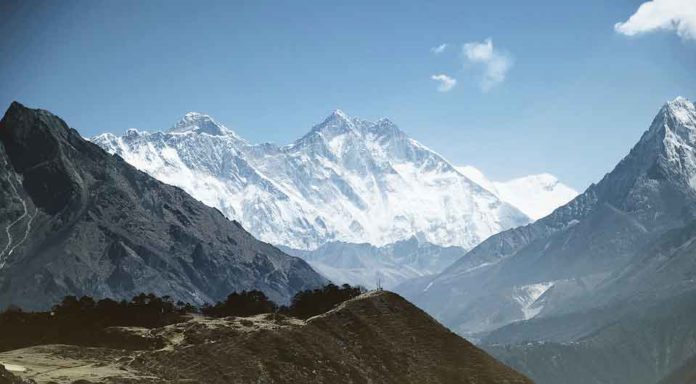No great earthquake has occurred in the Garhwal–Kumaun region of NW Himalaya in the past 500 years or more. But a new study suggests that the Garhwal-Kumaon segment of the northwest (NW) Himalayas is seismically the “most vulnerable section” of the region with the potential to generate great earthquakes.
For this study, scientists gathered the data from an analysis of five years (2013-2018) of continuous GPS measurements from 28 stations located in the Garhwal-Kumaon Himalayas and the adjoining Indo-Gangetic plains.
Vineet Gahalaut director of the National Centre for Seismology in New Delhi and corresponding author of the paper said, “The NW Himalayas have not experienced a great earthquake since at least 1505. An analysis of GPS measurements of crustal deformation suggests “strong seismic coupling” underneath Garhwal-Kumaon region.”
The strong Seismic coupling means the fault below Garhwal-Kumaon segment is locked and capable of accumulating stress. The width of the coupled region is estimated to be about 85 km. The region must have gathered a “slip” of in excess of 7 meters since the last earthquake in 1505 “which is sufficient to create an extraordinary seismic tremor in the area”. Slip is the overall uprooting of some time ago nearby focuses on inverse sides of a fault.
The report suggests that GPS measurements found the convergence rate in this part of the Himalayas is about 18 millimeters per year which have continued for more than 500 years — making this slice of the geological fault “one of the most earthquake-vulnerable segments of the Himalayan arc.
Scientists noted, “The network of GPS sites in the Garhwal Himalayas, the densest anywhere along the Himalayan arc, provides the most reliable estimate of spatial variations of site velocities in the Himalayas.”
“The derived coupling map from GPS measurements has implications for seismic hazard in the Garhwal-Kumaon region, adding that the regions of high-coupling would be the regions of high seismic energy release during future earthquakes.”
“Taking the analogy from the 2015 Gorkha earthquake and 1985 Mexico earthquake, the sediment-filled valleys, such as the Dehradun valley in the Garhwal region, are expected to be the regions of potentially more damage in future events.”
“This has serious implications in terms of seismic hazards, as the population density is higher in the frontal Himalayas and its contiguous Indo-Gangetic plains, thus exposing more people to high, near-field ground shaking.”
Besides Gahalaut, the study team included scientists from Institute of Seismological Research, Gandhinagar; National Geophysical Research Institute, Hyderabad; V.C.S.G. Uttarakhand University of Horticulture and Forestry, Pauri; Wadia Institute of Himalayan Geology, Dehradun and G.B. Pant National Institute of Himalayan Environment & Sustainable Development, Almora.
Chittenipattu Puthenveettil Rajendran, a seismologist at the Indian Institute of Science in Bengaluru, says the study “reiterates an earlier premise that the central Himalaya is strongly coupled and is waiting to break in a great earthquake anytime sooner”.
“The Garhwal-Kumaon segment of the Himalayan arc (including parts of Nepal and India) never had a great earthquake during the last 600-700 years. That means more than 20 meters of seismic slip is accumulated over these years, which can be released only by one or more great earthquakes (Mw >8.5) in the region.”
“This poses a serious hazard for the Himalayan region and the heavily-populated adjacent Gangetic alluvial plains — not seriously considered by the government.”
Their findings, reported in the journal Earth and Planetary Science Letters.
